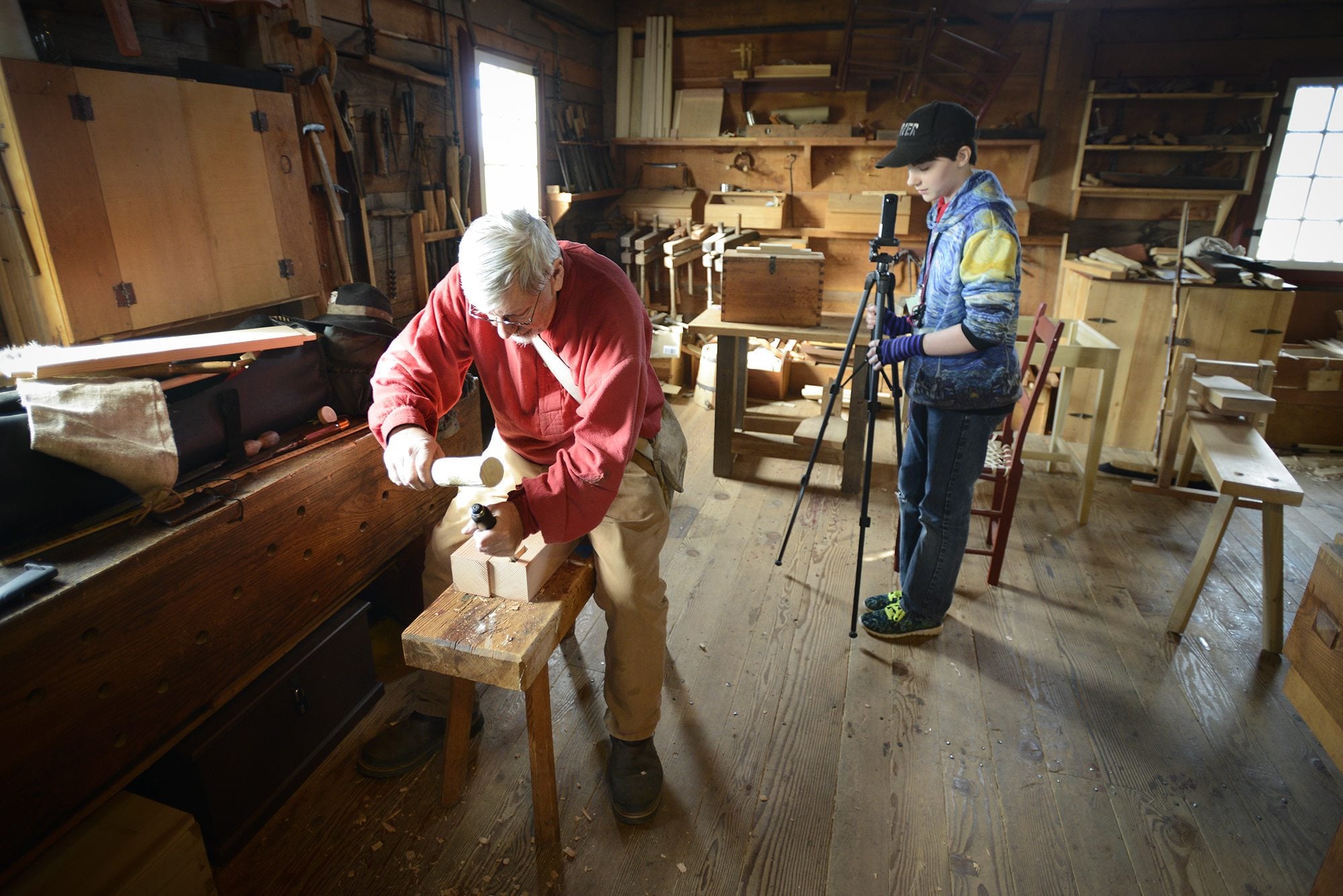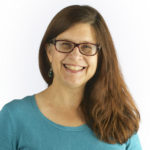Armed with the latest in digital technology, middle school students stood in the carpenter shop at Fort Vancouver National Historic Site documenting 19th-century technology.
Using a 360-degree camera mounted on a tripod, an iPad and their smartphones, a team of iTech Preparatory Middle School students interviewed volunteer carpenters, took notes on their phones and shot photos. They are among 120 iTech students who are creating a virtual reality tour of the historic site.
Thanks to their work, a person in Tokyo soon will be able to use a smartphone to virtually stand inside the carpenter’s shop, make a full turn and see a 360-degree view inside the building. Every building inside the reconstructed fort, in addition to the garden and the workers’ village outside the stockade, will be included in the VR tour. When all the photos, videos, audio narration and other information is joined, the virtual visitor will get a clear picture of life at Fort Vancouver 185 years ago.
John Zingale, an iTech Prep social studies teacher, spearheaded the project and is working with fellow teacher David Midkiff. Zingale said he isn’t aware of any other schools creating virtual reality tours.
The iTech Prep students aren’t only learning how to do historical research, but also are learning analysis, writing, collaboration and communication skills, Zingale said. The Internet has changed the way history is taught, he said.
“This is transformational in education,” said Zingale, a Google-certified educator. “The project-based approach is how we work at iTech Prep. That’s the real world. There’s something to be said for learning through play, learning through failure. If you don’t attempt something, you’ll never learn.”
The iTech teachers and staff at Fort Vancouver National Historic Site have been planning the project for more than a year. They started by posing the following questions to students: How can we share our nationally significant history with the community — and the world — in the digital age? How can we better reach those near and far who want to learn more about this national park? How can we leverage new technology to reach new audiences?
Inside the carpenter’s shop, students gathered around volunteer John Miller as he held up a long-handled spade.
“Why is that part of the shovel made out of copper?” Sophia Pettis asked.
“Copper keeps the wood handle from splitting when you put tension on the shovel,” Miller replied.
Nodding her head, Sophia used her smartphone to take notes while Miller and volunteer Mick Robins demonstrated the old-time technology of carpenters.
Then was time to shoot photos with the 360-degree camera. One student attached the camera to a tripod and set it in the center of the carpenter shop. Next every student cleared the building so they wouldn’t be in the photographs. The two carpentry volunteers kept working.
Standing outside the building, student Parker Uphoff used a live feed to operate the camera remotely with an electronic tablet. Moments later, the shooting was finished. Students gathered around Parker, who set the iPad on a table in the carpenter shop. Students reviewed the photos and Parker transferred the videos from the camera to the tablet.
Before their trip to Fort Vancouver, students spent about 30 minutes learning how to shoot with the 360-degree camera and how to control the camera remotely with an iPad.
“Our teacher showed us how to do it. It was really easy,” said Sophia. “We just set it down and took pictures.”
National Park Service curator Theresa Langford and chief ranger Bob Cromwell are working with the students and visited the school last month.
“Their teachers wanted them to use technology not just to learn history, but to teach history to a global audience,” said Cromwell. “One of the things we tried to emphasize is that they’d be seeing 19th-century technology — like this foot-powered lathe here — this is a technology,” Cromwell said, pointing to the treadle lathe operated by carpentry volunteer Robins. “It takes skill to use it. It doesn’t need batteries. It needs a human to power it.”
Filming with her smartphone, Sophia moved around Robins as he worked a table leg on the lathe.
Back in their classrooms, students will write scripts and add audio, including narration about the significance of each building and the site’s artifacts. It’s a big project with a looming deadline, Zingale said.
A screening of the completed virtual tour will be at 11 a.m. April 30 in the historic hangar at Pearson Air Museum. Vancouver Public Schools will put the virtual tour on its website. Fort Vancouver National Historic Site will link to it.
Students are learning to apply what they’ve learned to other projects.
“Fort Vancouver is the vehicle, but it’s prompting students to think globally,” Zingale said.
One of his students is visiting China, and took a 360-degree camera to shoot footage. Another student who plans to visit Paris in the summer asked him: “What if I do this at the Eiffel Tower? At the Louvre?”
“If you get students involved on projects and learning, they have a voice,” Zingale said. “You get their best work, and they’re going to learn a lot.”
Susan Parrish: 360-735-4515; twitter.com/col_schools; susan.parrish@columbian.com; www.facebook.com/schoolsclarkcounty




